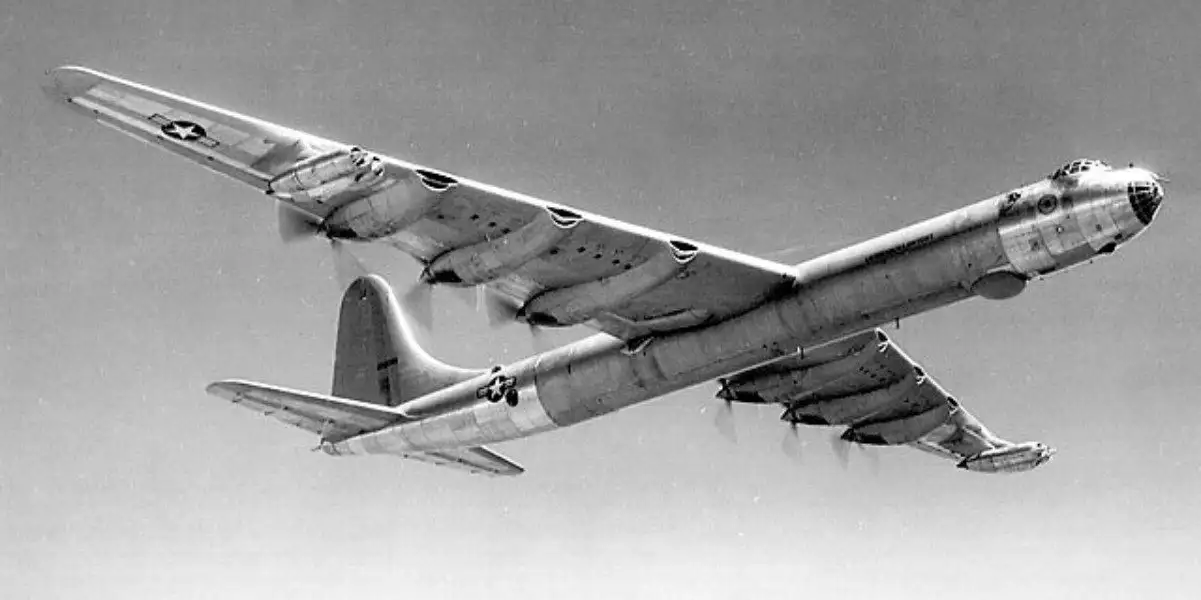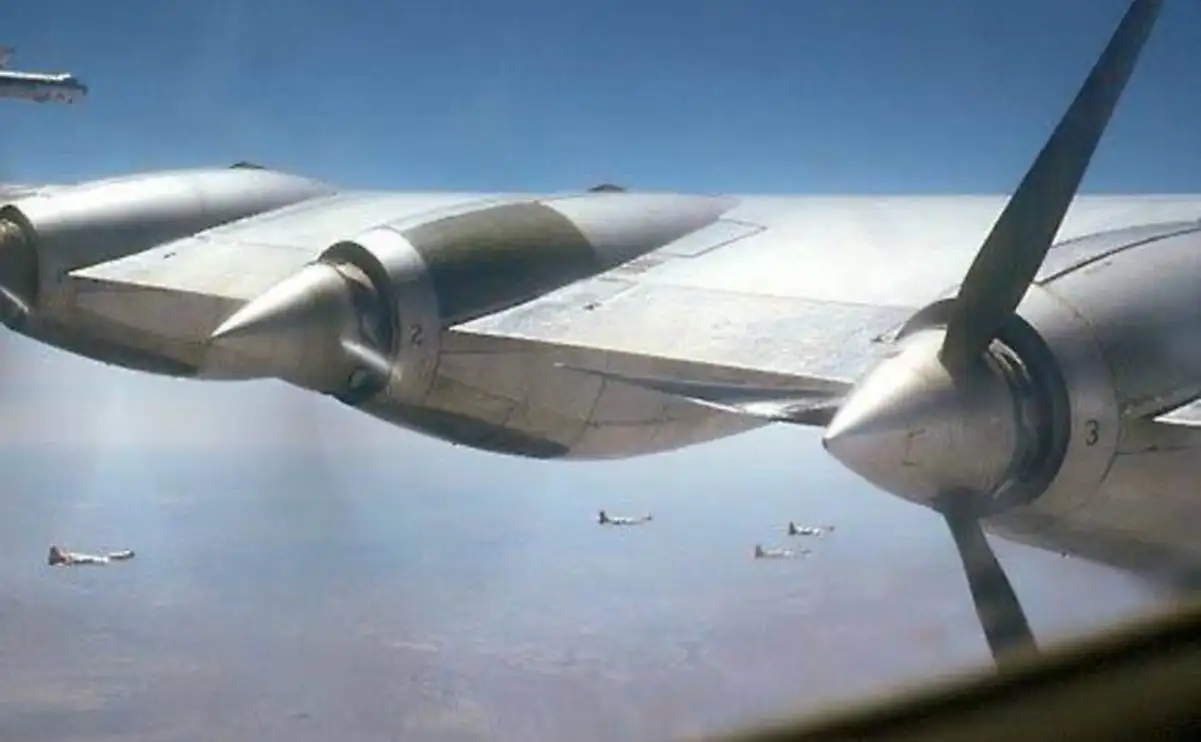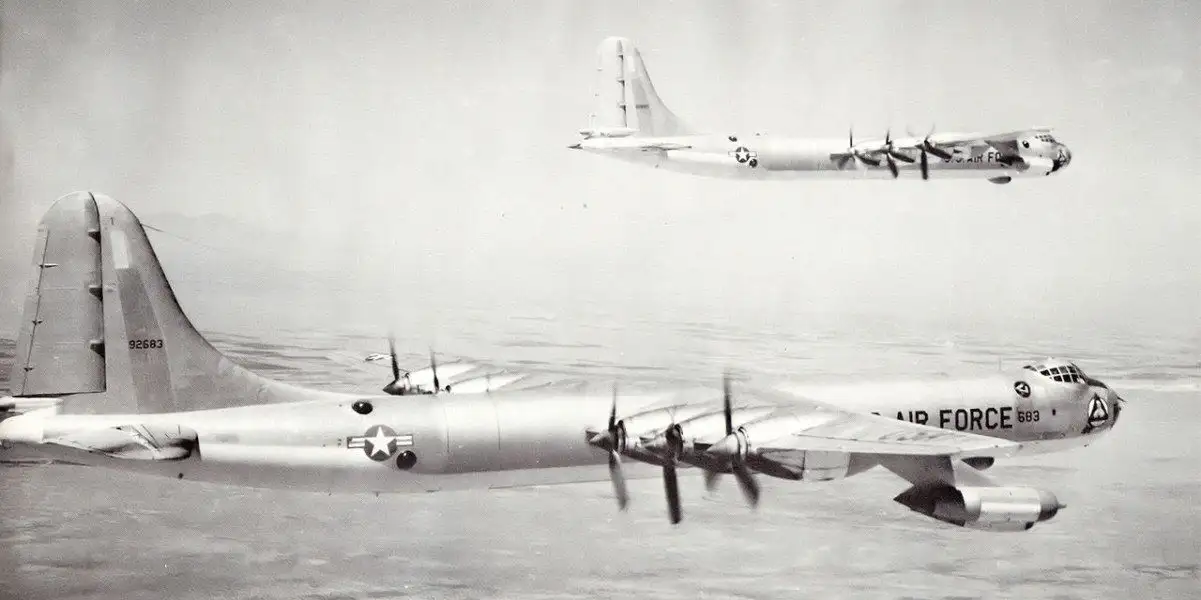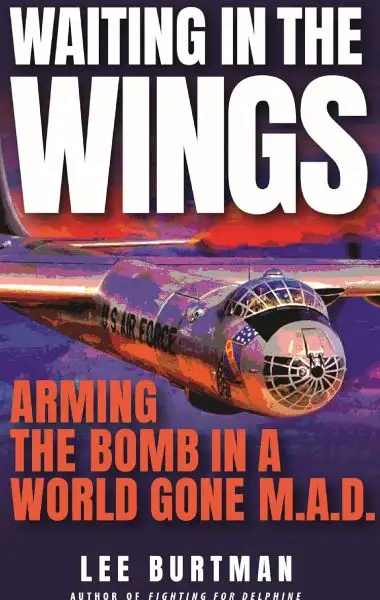The B-36 Peacemaker mechanic
In response to the United States Army Air Forces’ demand for an intercontinental-range strategic bomber, Consolidated Vultee (later Convair) designed the B-36 during World War II. The aircraft made its maiden flight in August 1946, and in June 1948, the Strategic Air Command received its first operational B-36.
As Lee Burtman explains in his book “Waiting in the Wings: Arming the Bomb in a World Gone MAD,” as the largest warplane ever built, the B-36 played a crucial role as a nuclear deterrent for SAC. His father, Neal, was responsible for maintaining the plane, even in flight. In fact, much has been made of the fact that the B-36’s wing was deep enough for engineers to reach inside and service the engines in flight.
Neal felt honored to be chosen to fly the Peacemaker, but the mission was definitely not a walk in the park! His typical route was called a “milk run,” where minimal enemy resistance was expected. After refueling in Rapid City, the team flew to Maine. If all systems were working properly, the plane would make a difficult circle from Newfoundland to Greenland, through Norway and Sweden, past Russia and North Africa, and then across the Atlantic. Neal wasn’t even sure where they were half the time!
These simulated bombing runs lasted fourteen to forty hours, an average of thirty-two hours per week. Neal exclaimed that even after he had overcome his initial fear of flying and had been flying for several months, the first tense hours in the air “still scared you!” Despite the excellent care he took of the aircraft, inherent malfunctions in the system could bring it down, not to mention the Soviet MiGs hovering below.
A disturbing sound
The noise of the bomber alone was disconcerting. A distinctive undulating hum created by its engines revving at maximum speed coursed through his lungs and stomach. He felt the reverberation throughout his body long after he had returned to the ground. It was so loud that Neal could hear nothing else, and his ears would ring for hours and hours after a flight. People on the ground knew it was approaching from ten miles away, and their houses and windows rattled loudly to announce its arrival.


The plane’s vibrations felt like they were going to tear its hull apart. And they were: Neal could see daylight as the “skin” and “ribs” were pulled apart and then glued back together like an accordion. After each flight, sheet metal workers spent hours repairing the “skin” and fixing the popped rivets.
The constant tension, the gas fumes, the lack of food, sleep and nicotine, and three days of intense convulsions on the plane forced Neal and his comrades to vomit violently on the tarmac shortly after landing. He hated the shorter weekend flights, when the crew had only three or four hours on the ground to refuel and reacclimate. To keep the engines from freezing, the men had to get back into the sky before their stomachs calmed down.
F-1 Electric Heated Suit
Although he had spent many frigid winters in Minnesota, clad in a light jacket and wet mittens, Neal was unprepared for the bitter cold of the stratosphere. It could be twenty to thirty degrees below zero in some areas of the plane where he worked. On the other hand, the berth in the rear compartment could reach thirty degrees at the top and twenty at the bottom, making it impossible to sleep at both levels. It was so uncomfortable that Neal slept very little in the bed – he would nap or read wherever he could, sitting or even standing.
Neal was equipped with an electrically heated F-1 suit plugged into the plane. Unfortunately, it barely kept someone from freezing to death. He wore gloves, boots, an oxygen mask, a heated high-altitude flight helmet with earmuffs, and a headset to stay in contact with the cockpit. Most importantly, he wore a parachute and a “Mae West” on his chest (a life jacket named after the curvy, risqué actress of vaudeville, stage, and film).
A small kitchen contained two mini-stoves, but there was rarely time or motivation to cook anything. Typical meals consisted of sandwiches in self-heating packages or C or K rations. Rations usually included some type of meat (Spam, anyone?), powdered eggs, cheese and crackers, canned purple plums, candy bars, instant coffee, and chewing gum (as well as toilet paper and cigarettes).
Using toilet paper was particularly problematic. It was often too cold to use the “head”, so one could either wear a diaper, which Neal adamantly refused to do, or use a “pee tube” that emptied into a plastic bag. Neal admitted that he was too scared on flights to attempt to eliminate anything else!


The tunnel
He could not smoke cigarettes either, as smoking with spurting gas and vapors in the air was strictly forbidden. Neal had been a heavy smoker since he was a teenager, and the nicotine craving he felt every time he flew was debilitating.
On his first day without smoking, he felt anxious, agitated, dizzy and irritable, and suffered from severe headaches. On the second day, he suffered from insomnia, trouble concentrating and a drop in blood sugar, which created sudden hunger and cravings for sweets and carbohydrates. Unfortunately, the pitiful Air Force snacks didn’t really fill him up. On the third day, the withdrawal symptoms reached their peak. Just when he couldn’t stand the situation any longer, he eagerly grabbed a cigarette he had kept in his pocket and inhaled deeply – after landing and purging himself.
On these flights, Neal would start at the front of the plane for a briefing with the bombardier assigned to aim the aerial bombs. He would then speak with the navigator, who would guide the plane using radar, maps and plans. He would then head to the rear area, which was accessed through a pressurized tunnel called the “train.” The tunnel, about 30 inches in diameter and 85 feet long, ran along the fuselage and through the bomb bay. Neal would pull his parachute up to his chest, then lie on his back on a flat sled attached to a monorail. After grabbing a suspended cable, he would pull himself up into the tunnel by hand, no easy feat with all his bulky equipment.
B-36 Mechanic: Essential Job: Keeping Engines Cool and Carburetors Hot
Sometimes the pilots would have a bit of fun with the rear crew: pointing the nose of the plane slightly downward would make the men groan and force them to work even harder to maneuver through the tunnel. If they tilted the nose upward, the screams of the crew as they hurtled backward at breakneck speed were good for a laugh.
Neal’s first task was to crawl into the plane’s wings to work on the engines in flight. The enormous wings were more than seven feet thick at their root (where they attached to the fuselage) and tapered to the tips. While securely strapped in, Neal could check the fuel tanks and landing gear, observe the engines with an analyzer, check intercooler settings and gear movements, and reset blown circuit breakers on the electrical panel.


One of the most important tasks was keeping the engines cool and the carburetors hot. The stainless steel firewalls surrounding the engines sometimes cracked, causing the cylinders to overheat and cause fires. The plane’s hull was made of a highly flammable metal, magnesium, which created a dangerous combination. Three B-36s were lost to in-flight fires, one of them even carrying an atomic bomb which, fortunately, had not yet been activated.
The least of a B-36 mechanic’s worries
The engines leaked oil which had to be constantly wiped and replenished. Sometimes an engine’s 150 gallon oil reserve was insufficient, so it had to be shut down. Neal also accomplished the dreaded task of changing hundreds of spark plugs in the engine block. Each of the six engines had 56 spark plugs, and the 336 required frequent replacement because leaded gasoline continually fouled them when the plane was at cruising speed.
In addition to inhaling the ever-present toxic fumes, Neal often came into direct contact with fuel, as leaks in the injection lines caused him to spray. Additionally, after flexing for several hours, the wing fuel tanks would separate from their seals, allowing purple fuel to drip onto Neal. Additionally, when the plane made a sharp 60-degree turn, the gas would spray out, dousing Neal with an even more toxic liquid. During his repeated trips, Neal likely received more than his share of lead and other chemicals. Such exposure, however, proved to be the least of his worries.
Waiting in the wings
Lee Burtman was born and raised in Minneapolis, Minnesota (USA) and lives in a northern suburb with her husband Greg and son Kyle. They also enjoy three other adult children, their spouses and eight grandchildren.
Lee is a retired educator with a passion for telling the stories no one else is telling: the true experiences of little-known, everyday soldiers and airmen who risk their lives to secure our freedom.
“Waiting in the Wings: Arming the Bomb in a World Gone MAD” is his third book and highlights his father Neal’s work on the B-36 “Peacemaker.” It is available from the author at burtmanlee@gmail.com or on Amazon–Waiting in the Wings by Lee Burtman.


Photo credit: Lieutenant Colonel Frank F. Kleinwechter / US Air Force